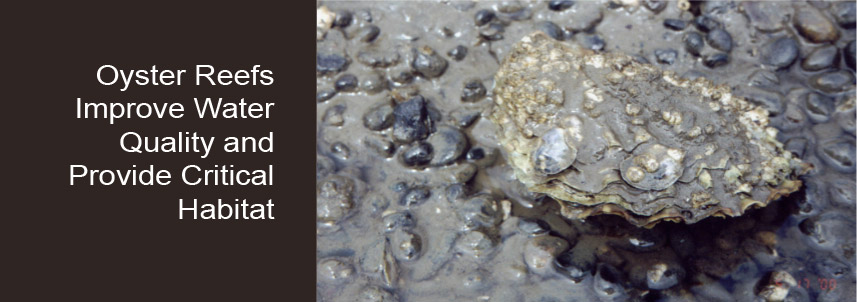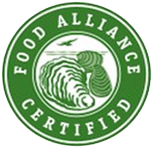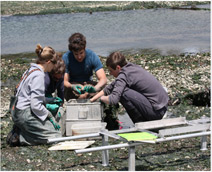Explore the Tideflats On the Farm  Shellfish Restoration  Recreational Shellfish 
|
Shellfish RestorationEfforts to rebuild native oyster populations throughout the Pacific Northwest 
Shellfish restoration efforts along the West Coast center mainly on re-establishment of the Olympia oyster (Ostrea lurida), the only oyster native to the Pacific Northwest. The Oympia oyster was once found in abundance from Alaska to Baja California. This small, but flavorful oyster supported a vibrant commerical industry until the the1920s when the population crashed due to pollution and over harvest. Some commercial cultivation still exisits but is limited to a few South Puget Sound inlets. Thanks to pollution reduction measures and restoration efforts, populations are starting to rebound, albeit slowly. Major restoration areas include Liberty Bay, WA, Netarts Bay, OR and San Francisco Bay, CA. Depending on the area, restoration might include planting of hatchery-raised larvae or beach enhancement using oyster shell to provide substrate for Olympia oysters to settle naturally. Restoring native oyster populations will not only improve water quality through filtration but also provide critical habitat for other marine organisms including juvenile crab and salmon. Restoration at WorkOlympia Oyster Restoration in Budd Inlet, WA During the mid to late 1800s, early inhabitants along Budd Inlet experienced Olympia oyster populations so plentiful that citizens would proclaim, “When the tide is low, the table is set!” Today, their populations are tremendously scarce and patchy due to overharvest, habitat loss and pollution so much so that the Inlet closed for all shellfish harvesting. In 2006, the Puget Sound Restoration Fund (PSRF) took initial steps to reestablish Olympia oyster populations in the area by scattering 250,000 juveniles on beaches of Budd Inlet’s Tykle Cove. More recently, PSRF, the Squaxin Island Tribe and a number of partners used broodstock from various south Puget Sound inlets to create Olympia oyster seed that is certified as representative of the genetic structure of this region. This local seed was out-planted in 2012 on a sheltered beach along East Bay. Shortly thereafter, PSI performed a site assessment for the Squaxin Island Tribe to assist them in evaluating the potential for restoring Olympia oysters on a newly acquired tideland parcel along West Bay. PSI also offers support to a dedicated group of homeowners that have been growing shellfish along East Bay for over a decade with the sole purpose of improving water quality and providing substrate for Olympia oyster larval settlement.
|
||||||||||||||




